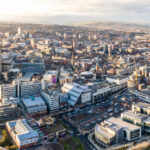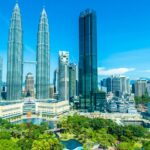It is a known fact that good design can heavily influence the economic, social, and cultural aspects of a place. After all, whether we like it or not, our environment heavily influences our daily lives. Urban design, in particular, is pivotal to creating a high-quality and fulfilling city life.
A good urban design improves the functionality of attractiveness of a city, boosts protection and safety, and inspires communities to grow. Interested to learn more about this concept? In this article, we’ll explore the definition of urban design, its significance, and fundamental components.
What is Urban Design?
Essentially, urban design takes into consideration variegated aspects of our towns and cities, including their layout, appearance, and functionality. Urban design is both the medium and aftereffect of developing localities where people from all walks of life can live, interact with one another, and engage with their surroundings.
It is also a field that examines the overall standards of our urban surroundings and the impacts they have on our quality of life. Placing the quality of our spaces and the city as the heart of the matter, a good urban design does much more than just meet our basic requirements in the built environment industry.
Instead, it strives to enhance and refine our urban environment, with the creation of a sense of place as the end purpose. As a result, planning, development, architecture, landscape architecture, engineering, economics, law, and finance are just a few of the numerous disciplines that go into urban design.
Above all, the concept combines the disciplines of architecture, planning, and landscape architecture to accurately address the aesthetic and functional aspects of the built environment on a variety of scales, from the small-scale neighbourhood, park, or block to the broader community, city, or region.
Read More: Creating Values and Connections with Placemaking Malaysia
Dissecting Urban Design from a Malaysian Perspective

Undoubtedly, urban design has long gained traction in other countries, such as the United Kingdom. Having said that, urban planning is still a relatively new subject and is still in its infancy in Malaysia. Thus, it is still not given significant priority in the construction of cities.
While new cities like Putrajaya and Cyberjaya have made efforts to adopt a specific master plan, the result is still more building-oriented, leaving many opportunities for improvement. This is especially true regarding climatic and cultural considerations, as well as the lack of design coordination incorporated into urban design.
As such, Malaysia still has a long way to make significant progress in enhancing our urban environment. For instance, the unprecedented COVID-19 pandemic leads to a bigger, new-founded appreciation for public parks as more people realise the significance of nature and its benefits.
After the Movement Control Order (MCO) was relaxed, people could be seen swarming urban green spaces like Taman Tasik Titiwangsa. This is understandable, as, in times of physical isolation, these places offer social resilience and can mitigate some of the negative consequences of lockdown policies on mobility and social interaction.
Due to this, more deficiencies in our urban design have come to light. For example, our streets are not able to provide a conducive environment as they do not have enough space to accommodate both vehicles and pedestrians. This calls for a rethinking of our spaces and what we can do to improve them.
Read More: Realising the New Urban Agenda in Malaysia
The Importance of Urban Design
This matter greatly impacts:
- The community’s socioeconomic makeup and economic success by encouraging local businesses and entrepreneurship, luring residents, lowering housing and commuting costs, and ensuring equal access to employment opportunities, amenities, and services.
- The built and natural forms of which specific structures and infrastructure are sited, as well as the physical scale, space, and atmosphere of a location. As a result, it also influenced both the sustainability results and the equilibrium between natural ecosystems and developed settings.
- How people interact with one another, move through space, and use a location. It can also have an impact on health as well as other social and cultural possible consequences.
Making Better Cities with Urban Design
To conclude, urban design is a critical and defining aspect of developing better spaces to cater to the needs of all. In order to accomplish a myriad of objectives and interests, PEQ Consult creates inclusive and public-oriented urban planning services.













